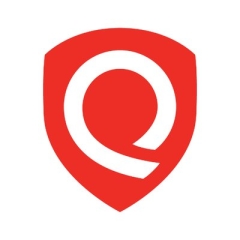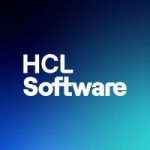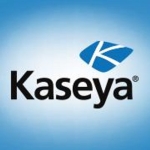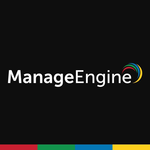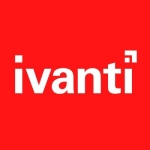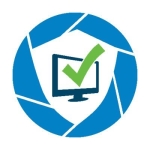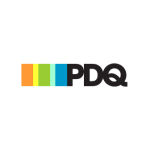We use almost every module that Qualys has, except the EDR, which is endpoint protection. They came up with that module last year. We use their patch management, vulnerability scanners, cloud agents, and network passive scanners. We are using everything that is available.
They have a very good approach called TruRisk. If an exploit is publicly available or something is public-facing, they have an in-depth categorization process, so I do not have to think about what to patch first. Qualys take care of that. They assess them based on many factors. They have a team that works on that and goes through every aspect of the vulnerability in terms of how easily it can be exploited, and then they put a priority on it.
TruRisk automation has not helped us remediate vulnerabilities without needing to involve our security team. That is because we have been having some issues with the Windows Store app. We blocked it now but did not block it before, so it got installed on some of the machines. Because of that, we have to deal with it manually because Patch Management cannot do that. They will look for attributes, and they still exist. We cannot delete or update them because the Windows Store app is blocked, so we have to deal with those things manually.
They have a dashboard, which is very useful. I heavily rely on the dashboard. I create additional widgets if I have to, but the dashboards they have in their library are sufficient and very easy to use. I already know their language and I can build queries if necessary.
Having this single source of truth affects the way our security and IT teams work together. Instead of me telling or sending screenshots, I can send them a link. When I send the link, others can see the exact same screen and easily drill down on endpoints.
This single source of truth helps reduce costs. It saves time, and time is always equal to money.
Patch Management has improved our patch rates. Previously, our approximate patching duration to close a vulnerability or remediate a vulnerability was almost 30 to 40 days. Right now, it does not exceed 11 days. Qualys has its own priority levels. They have priority 4, priority 3, priority 2, and priority 1 levels. Priority 4 ones are the most dangerous ones. They are patched right away. For other priorities, it was 30 to 40 days and then it was 21 days. The last one was about 14 days and now it is 11. It is a very good progress from what it was before.
I do not use their Risk Reduction Recommendation Report, but I usually go for the dashboard. The dashboard usually tells everything such as the end-of-life hardware, software, or other things. When I drill down, I can generate a report and present it to my IT colleagues and tell them that we need to get rid of this equipment or this software. We need to do something with it. This is an on-demand report, so I can put it on my schedule, and when I need it, I can generate it.
Patch Management has definitely helped to reduce our organization's risk. It is hard to provide metrics because, with the security field, you cannot be very precise about how secure you are. However, I can sleep at night and not stress about if some computer is being patched. I do not worry about situations where when you have a lot of systems, some of them you cannot patch because they have old applications. If you patch them, it will break something. I do not have that stress because I can rely on Qualys to do its job. In my previous job, I have had systems that I could not patch. I had to request a window to do the patchwork. With Qualys, I do not have to do that. There is a work/life balance. I got back my Saturdays and Sundays. In my previous job, I came to the job on Saturday and Sunday when people were not there and patched the systems. With Qualys, it is definitely not the case. We do not have to do that.
Patch Management, if configured correctly, works effectively without requiring further action. There are some applications that Patch Management cannot update, but they have a Custom Assessment and Remediation module to update third-party software. That module completes patch management, and you can now update everything.
The vulnerability scanner is solid and thorough. Vulnerability scans go through everything such as the endpoints, servers, and hardware.
They are constantly working on making it better. There is no 100% reliable or working application or software. There are caveats with the network passive sensor when it does not merge or something does not feel right, but whenever I have to report on those things, someone from their support team jumps on and tries to help us, which is why I like it. They should keep it up.
They can maybe do check-ins with the customers once a month. All the vendors are doing it nowadays. Qualys can do regular check-ins to go over not only all the vulnerabilities but also the overall process to see if there is anything where we might need improvement. They know about the latest trends, and they have meetings about them. They can relay to us some newer information that we do not know, but they saw in our environment. That would be a nice thing.
I have probably been using it for three years, give or take.
I have interacted with them many times. Their support is good and reactive. When we needed support, it took a day or two. We can always reach out to our technical account manager. He is able to get on board with the engineers to help resolve issues, which I appreciate. If we need to fix something urgently, he can always help us.
We also use Microsoft through the GPL, and we have KACE, which checks for missing patches and applied patches, but mostly, we use Qualys. Qualys would be our single pane of glass where we see all those.
I joined after the initial deployment was completed, but I deployed a couple of scanners, like vulnerability scanners on the VMs, and that process was easy. It was self-explanatory and straightforward. You just spin one up, put the IP address, and it works.
It does not require any maintenance. It is a cloud agent. As long as the cloud agent is installed on the endpoint, we are collecting all the information and the system is being patched. That is a good part.
It took us some time to realize its benefits. I went to a Qualys conference, and that was when I started to realize its benefits. Till then, I thought Rapid7 was a good one or Manage Engine was a good one. I thought those products were good, and they also patch third parties whereas Qualys did not patch third parties. After going to Qualys, they explained there is a way to do that. It was a longer way, which I did not do. We decided to go with an MSP that specializes in installation and fine-tuning the Qualys product. When they did everything, I did not have to touch any configuration with Qualys Patch Management. Everything was going through. With the way we did things previously, it was going through, but it was a longer approach. It was taking a little longer and was more manual. We did not properly utilize tagging. We did not properly utilize the patching process scheduling. The MSP guys did tagging. They did automation of the patch management according to the risks. That was very important. Previously, we had six or seven jobs and sometimes, we manually patched individual machines. After the MSP guys did the fine-tuning, we had only two scheduled jobs, and that was it. The first job does 10 to 15 testing computers, and then the next one does the old machines.
I would rate Qualys Patch Management a nine out of ten.

